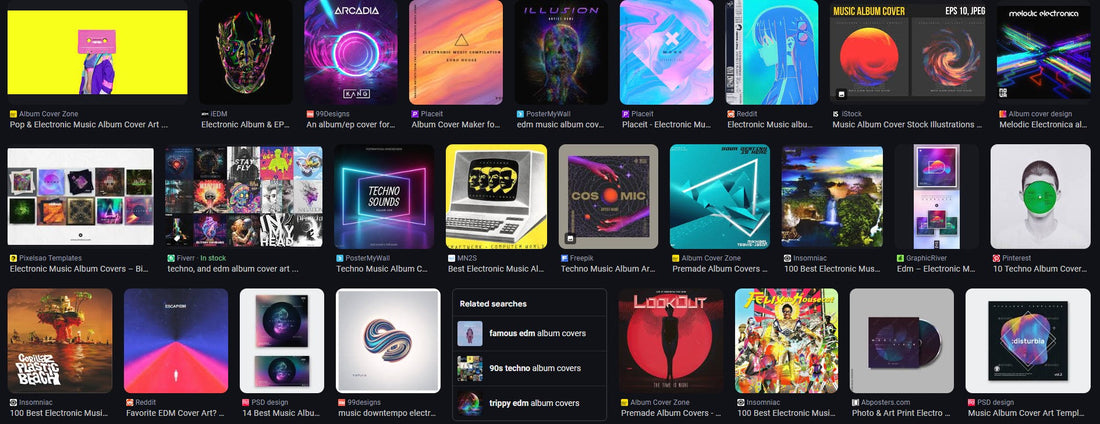
A Brief History of Electronic Music: From Pioneers to Global Phenomenon
Share
Electronic music has shaped modern soundscapes across multiple genres, from dance floors to underground scenes. What began as experimental sound manipulation in the early 20th century has grown into a global cultural force, influencing pop, hip-hop, and club music. Let’s dive into the evolution of electronic music, exploring its pioneers, technological innovations, and defining subgenres.
Origins (Early 20th Century – 1960s)
The Birth of Electronic Sound
Electronic music’s roots trace back to avant-garde experimentation. Some of the earliest electronic instruments and techniques include:
- The Theremin (1920s-30s): Invented by Léon Theremin, this touchless instrument created eerie, oscillating tones that influenced early film scores and avant-garde music.
- Musique Concrète (1940s-50s): Developed by Pierre Schaeffer in France, this technique involved manipulating recorded sounds on tape to create new compositions.
- Early Synthesizers (1960s): Innovations like the Moog Synthesizer and Buchla Modular paved the way for electronic compositions in experimental, rock, and pop music.
Rise of Electronic Dance Music (1970s-1980s)
Kraftwerk & The Birth of Synth Music
In the 1970s, Kraftwerk from Germany pioneered a robotic, synthesized sound that laid the foundation for electronic dance music. Tracks like Autobahn (1974) and The Model (1978) introduced sequenced rhythms and computerized vocals, influencing everything from new wave to hip-hop.
Disco & Electro (Late 1970s-1980s)
- Giorgio Moroder blended synthesizers with disco, producing hits for Donna Summer like I Feel Love (1977), which shaped modern dance music.
- Afrika Bambaataa & Planet Rock (1982) fused hip-hop with Kraftwerk-inspired electro beats, influencing breakdancing and early rap production.
House & Techno (1980s)
Electronic dance music took over clubs in the ‘80s:
- House Music emerged in Chicago, pioneered by DJs like Frankie Knuckles at The Warehouse nightclub.
- Techno developed in Detroit with futuristic beats from Juan Atkins, Derrick May, and Kevin Saunderson.
Explosion of Subgenres (1990s – Present)
By the 1990s, electronic music had splintered into countless subgenres, fueled by technological advancements and global dance culture.
Major Electronic Subgenres & Their Origins
1. House (1980s, Chicago, USA)
A 4/4 beat with deep basslines and soulful vocals. Subgenres include:
- Deep House (smoother, jazzier)
- Tech House (minimal and mechanical)
- Progressive House (anthemic, stadium-filling)
2. Techno (1980s, Detroit, USA)
Characterized by repetitive, mechanical rhythms. Subgenres:
- Minimal Techno – Stripped-down beats, pioneered by Richie Hawtin.
- Acid Techno – Features squelchy 303 basslines, popularized by Phuture.
3. Trance (1990s, Germany & Netherlands)
Melodic and euphoric with long build-ups. Subgenres:
- Psytrance (faster, psychedelic)
- Progressive Trance (smoother, club-friendly)
4. Drum & Bass (1990s, UK)
Fast, syncopated beats (160-180 BPM) with deep bass. Subgenres:
- Liquid DnB (soulful, jazzy)
- Neurofunk (dark, heavy basslines)
5. Garage (1990s, UK & USA)
A blend of house and R&B with syncopated rhythms. UK Garage gave rise to:
- 2-Step Garage (more swing, less 4/4)
- Bassline (heavier, wobblier basslines)
6. Dubstep (2000s, UK)
Defined by heavy bass drops and wobbly synths. Subgenres:
- Deep Dubstep – Darker, atmospheric sounds.
- Brostep – Harder, more aggressive (popularized by Skrillex).
7. Trap (2010s, USA)
A fusion of hip-hop and electronic beats with 808 bass. Subgenres:
- Future Trap – Melodic, cinematic.
- Hard Trap – Heavy, festival-style drops (popularized by RL Grime and Flosstradamus).
8. Future Bass (2010s, USA & Australia)
Bright, uplifting synths with vocal chops, led by artists like Flume.
9. Hardstyle (2000s, Netherlands)
Hard-hitting kicks and euphoric melodies, a staple in European raves.
10. Industrial & EBM (1980s – Present, Europe & USA)
Dark, mechanical beats influenced by Front 242.
Electronic Music’s Lasting Impact
Electronic music continues to push creative and technological boundaries. From underground raves to mainstream festivals like Tomorrowland and Ultra Music Festival, its influence is undeniable.
Explore More
- Dive into Kaos Kouture for more on electronic music’s cultural impact.
- Check out our pop art music T-shirts inspired by electronic legends.
Electronic music’s story is far from over—new sounds and subgenres continue to emerge, keeping the scene alive and evolving.
